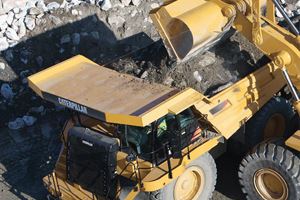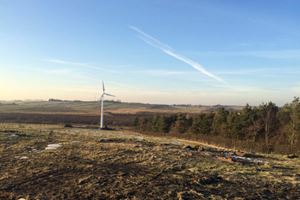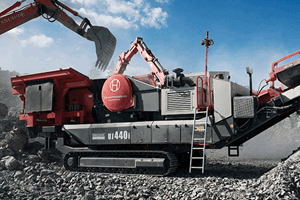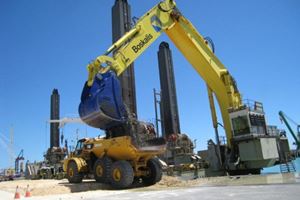A viable solution that can end lug wear
In many industries, lug wear is simply accepted as an unavoidable fact of life. But does it need to be? Could the Expander System offer a viable solution?
Any machine with moving pivots will eventually experience lug wear. The most common are applications subjected to heavy loads and vibrations, such as mining and construction equipment. Other common applications include industrial presses, wind turbines and moveable bridges. Any moving pivot in just about any application will experience lug wear at some point – the higher the demands, the faster the onset. When it happens, it will lead to a loss of precision and control.
There are three main reasons why lug wear is inevitable when using conventional straight pins:
- Lugs are typically made from softer material than the pin, causing them to deform when the two come into contact.
- There is no pressure distribution in the lugs. This is due to the play between the lug holes and the pin, which is needed to mount the pin. When the pin is loaded, all pressure from the pin is forced onto thin lines in the lug holes.
- The play enables the living force applied to the pin to hit the lug holes with full power as the equipment’s moving direction changes.
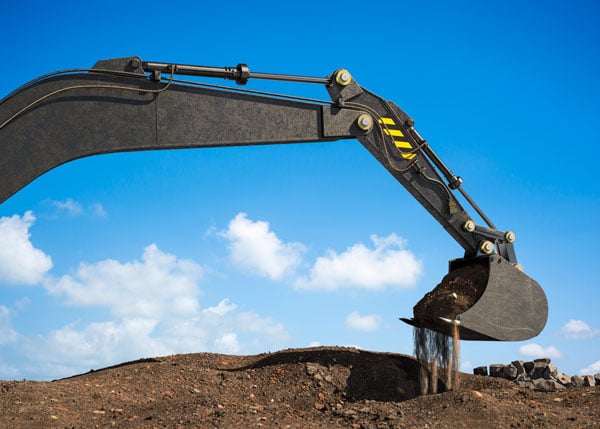
The most common solution to lug wear is to repair the lugs with welding and line boring. The first step of this is to unload the pivot and dismount the pin. Then the line boring equipment needs to be lined up and “mounted” to the equipment. The worn lugs are rebored, filled up with weld, and finally rebored with a fine cut to the original diameter and tolerance. After removing the line boring equipment and repainting the lugs, a new replacement pin is installed. This whole process can take anywhere from a few hours to a few days, depending on the size and complexity of the installation. During this time, the machine is inoperable.
Despite the time and costs, this method is generally accepted as unavoidable. “It’s just something everybody does because everybody else does it, and they’re not even aware that there is another way,” says Jonny Wiberg, development & research engineer, Expander System. “Repairs are just accepted, and people don’t even look for another solution.”
Over the years, engineers have searched for better solutions to the lug wear problem. None of the previous attempts has proven universally effective. One option is to use a pin that fits as tightly as possible into the lug’s holes, practically eliminating the play between the two, and ensuring the best possible pressure distribution for a straight pin. Not only does this make the pivot expensive and the pin difficult to mount; over time, the lug hole will expand anyway.
Using the temperature method, the pin is frozen and then allowed to get warmer and expand once installed, creating a perfect press fit in the lugs. Tolerances of both pin and lugs need to be exceptionally tight – down to some hundredth of a millimetre, or tolerance grade 6. This significantly increases the cost of the pivot. Pivots with frozen axles are often considered maintenance-free, but they are impossible to maintain, as the axle can’t be removed.
Another solution is to improve the strength of the lugs with bushings. However, this will only prolong the onset of lug wear, and will not eliminate the problem completely, as the bushings need to be replaced several times during the equipment’s lifetime.
None of these solutions will completely remove the need for costly and time-consuming lug repairs. In contrast, the Expander System can potentially eliminate lug wear once and for all. It works by using a pin with tapered ends and expanding sleeves on each side. When it is installed, the sleeves expand radially, so that they fill the lug to create an exact press fit.
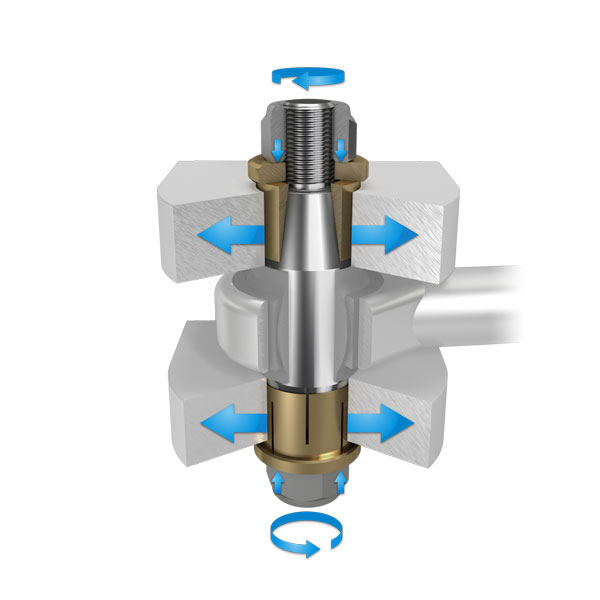
As the sleeves of the Expander System expand into the lug, they can take up unevenness or deformation, eliminating the need for welding and line boring. This significantly reduces the time needed for installation as well as the machine downtime. The most time-consuming process for installing the Expander System is the dismantling and removal of the original pin – a process that is also necessary before welding and line boring. In a recent example, the Swedish Expander System company was asked to do a cost comparison for a 70-millimetres axle. Considering the cost of the expansion bolt, the cost of pin removal and installation, plus the income loss from downtime, the total cost of the Expander System solution was calculated at around 500 euros.
A conventional pin was around a third of the purchase price, while the costs of removal and installation remained the same. The time needed for line boring, in addition to the time taken for the transportation of line boring equipment, and the loss of income from significantly higher downtime, all contributed to a total cost estimation of over 2,300 euros.
Using the Expander System will not totally eliminate the need for boring, but for the welding process. It will eliminate the lug wear problem for the lifetime of that pivot. Using conventional pins, lug wear would inevitably return and the repair procedure would need to be repeated. In a typical application, this happens three to four times during a machine’s lifetime or every 3,000 or 4,000 hours. This means that the cost savings can amount to thousands of euros – for each machine.
How a rusty nail led to an award-winning innovation
In the 1950s, twin brothers Everth and Gerhard Svensson were building roads throughout Sweden, and becoming increasingly frustrated with the downtime and repairs caused by lug wear. One day, when a pivot pin was coming loose, Everth improvised and took an old rusty nail to fix the pin in the lug hole.
As a temporary solution, the rusty nail worked quite well and inspired Everth to develop the Expander System. For many years, the twin brothers used expander products as they continued to build roads. However, it wasn’t until 1986, when Everth’s son Roger realized the ingenuity of his father’s solution, that the concept was patented and the company Expander System Sweden AB was founded. In 1987, the Swedish Minister of Industry awarded the Expander System with the Innovation Development Award, in memory of Alfred Nobel. Today, the Expander System is installed in millions of machine joints globally.
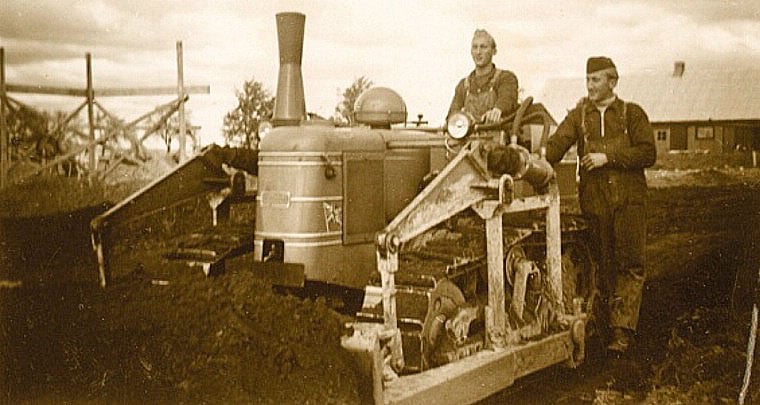
Getting over 6,000 extra operating hours
Lug wear is a widespread problem for machinery pivots. It has cost users of machinery lots of money through the years – for repairs as well as for downtime. This is something that the Expander System can put an end to.
The Expander System will in most cases cost more than a traditional straight pin. But when all costs are fully calculated, including the time and costs associated with welding and line boring, and the loss of production due to downtime, the Expander System will prove to be significantly more cost-effective. The full extent of savings depends on many different variables, but it is fair to say that the higher the frequency of lug wear and the higher the costs of downtime, the greater the potential savings.
For Swedish construction machine supplier Maskinia AB, every minute of downtime for machine repairs means lost income. This is why they have been using the Expander System since 1999.
Recently, an excavator was brought in for repairs after 3,700 hours of operation. Using the Expander System, the boom mounting axle was replaced in just 6 hours. By contrast, the repair would have taken 3–4 days if it was replaced by a traditional pin, using the common method of welding and line boring.
Lars Malmén, Aftermarket Manager at Maskinia, says that, “The Expander System admittedly costs more than a traditional axle, but if you include repair time and stoppages with loss of income, the difference is clearly to the advantage of the Expander System. If you add the fact that Expander offers a 10-year function warranty, you can count on at least 10,000 problem-free operating hours – compared with the 3,700 that is regarded as normal for a traditional pin.”
